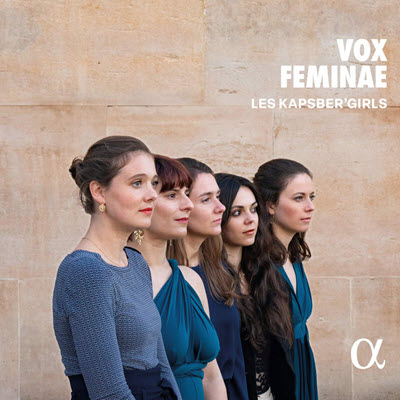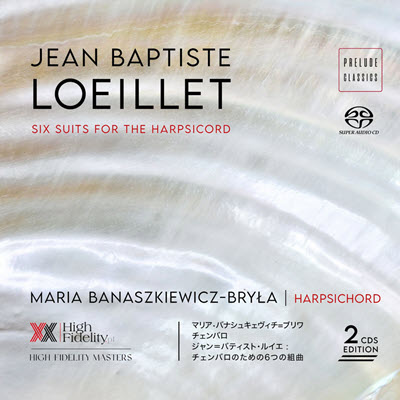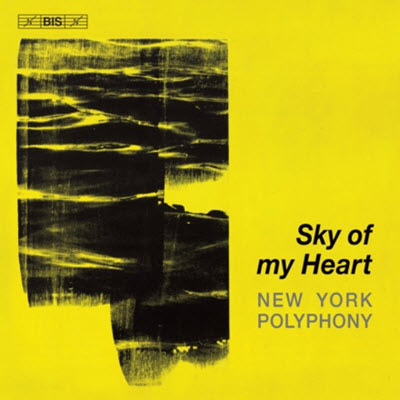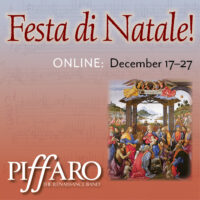by Andrew Appel
Published February 10, 2025
J.S. Bach: Goldberg Variations, Nevermind. 2-CD set, Alpha Classics ALPHA1116
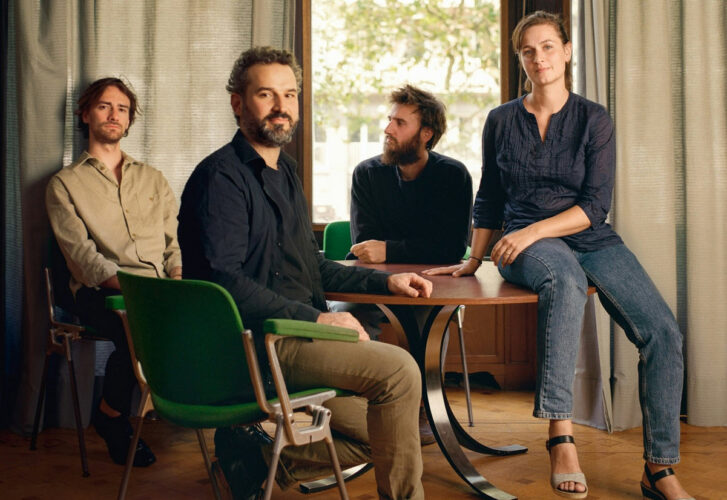
Harpsichordists will tell you, with no hesitation, that the Goldberg Variations are the greatest gift given to us by J.S. Bach. Playing them takes us through a universe of harpsichord sensuality, intelligence, imagination, affect, allusion, and virtuosity. The experience of playing them from the opening sarabande to its recapitulation is a voyage through heaven and heart.
For this reason, for the work’s brilliance in exposing the beauty and versatility of the harpsichord, I have never been interested in exploring the arrangements for string trio that have appeared over the last decades. However, when presented with any effort from the wondrous French quartet Nevermind — Anna Besson, (flute), Louis Creac’h (violin), Robin Pharo (viola da gamba), and Jean Rondeau (harpsichord) — I always put both ears to their projects. They understand the forms and styles of Baroque repertory and are comfortable, convincing, and communicative with every work they approach.
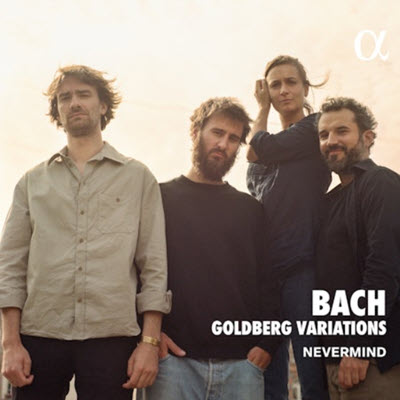
On his own, Jean Rondeau has shown that he is an ideal interpreter of the Goldbergs in their original form; as an ensemble, Nevermind take on their roles and enrich each line with a consciousness of beauty that is specific to the instrument in hand. There is an organic spontaneity from so much knowledge without any sense of pedantry. They are not there to teach us, they are there to satisfy and move us.
And so, to say this quickly: this new recording is exquisite. (Nevermind will be on a North American tour in March; many dates have already sold out, although some performances will be livestreamed.)
As I listened, I sensed new light being shed on each variation. I noticed that what makes Nevermind’s translation so compelling is the sense that this was Baroque chamber music, a mixed ensemble with continuo. So many other performances, probably inspired by Mozart’s arrangements of fugues from the Well-Tempered Clavier with Mozart’s original preludes, come across as essays or exercises. Here gambist Pharo and harpsichordist Rondeau find the musical allusions and interpret and carve out versions of each variation that resemble music that we recognize across the 18th-century music world.
Thus we hear instrumental obbligato writing from cantatas. We hear trio sonatas or affecting flute or violin solo movements. To the emotional and intellectual vastness of these variations, Rondeau and Pharo, with their fine colleagues Besson and Creac’h, add the vastness of the large musical world that nourished Bach’s imagination. There is much that sets these performances apart, but for this listener, the decision to include the continuo and refer to chamber music is the most convincing and successful.
It allows the individual members to bring out the unique expressive qualities of their instruments, whether flute, violin, or gamba. They are able to tastefully ornament the variations in a way not possible when only ten fingers are at play. Rondeau’s continuo playing on harpsichord or organ — he has several instruments at his disposal on this recording — is rich, fluid, beautiful, and right. Surprisingly, yet with precedence, the gamba sometimes launches off from its role as bass line, sails into a soloist’s realm (shades of Couperin’s Les Nations as an example). Sometimes a variation that refers to old styles begins as a solo organ work but soon is joined by the other players, giving a sense of strict ancient counterpoint that delightfully blooms into a garden of musical colors.
The musicians know the dances and forms and so we are pleased. (Other interpreters often don’t recognize, or characterize, a gigue or minuet or courante.) However, with Nevermind, some changes in character are particularly revelatory and surprising. The canons often become more expressive as the violin and flute shape the lines with a limpidity that isn’t available on the harpsichord. The effect is delicious as the dissonances take on more spice. And if the virtuoso variations are less fiery, they often take on a grace that is not Scarlatti but more Balanchine!
Preparing for this reviewing assignment, I compared Rondeau’s recording of the original to Nevermind’s arrangement. From the first moments of the Sarabande, the harpsichord shimmers like silver. Playing with this sonority, using rubato to great effect, is seductive. But in this new ensemble recording, it’s the flute as our host that produces something entirely other. It plays with a tenderness and vulnerability that belongs to the traverso.
The pleasure of discovering and comparing will be for each listener, but here are a few observations. In a few of the two-manual variations (often called arabesques), the work becomes an unaccompanied duo for two instruments that leap-frog and tickle, often unaccompanied, but sometimes the continuo enters with a very subtle underlay of the harmonic structure.
Variation 17 becomes a two-part invention. Variation 26, with its flowing lines, in 18/16 against the Sarabande in 3/4 is a humorous fanfare against a sparkling torrent. (Contrast that with the harpsichord version, a beguiling lyrical sarabande against the contradiction of a virtuoso line). Variation 28 on the harpsichord is a strange and magical work in which an incessant trill pushes aside rational thought. In the instrumental version, the trill and droplets that accompany it are like dew drops that sparkle and make us laugh.
Variation 29, the most toccata-like variation with its clamor of chords, is voluptuous in the arrangement but it loses the thrill of explosive clangor on the harpsichord.
With all these observations, there is only one variation that I feel is at a loss in the transcription and this is the “black pearl,” variation 25. No question that the violin solo lament is beautifully played, but there is something about the restrictions of the harpsichord that make this most exquisite and tragic of all the variations — even more powerful and compelling.
I do have one other caveat, which has more to do with the editing process than musical decisions by the ensemble. The silent spaces between variations are uniform and thus eliminate the sense that these variations can (and maybe should) be heard in groups rather than as individual pieces. This is somewhat true in the spaces between repeats as well. It feels studied in a way that contrasts with the spontaneity and flexibility, the organic music making, that marks every moment of this voyage into the Goldbergs.
But nothing could contradict my sense that this is by far the most convincing of transcriptions that abduct the variations from a harpsichord with two manuals to an ensemble that simply can’t resist Bach’s imagination and genius.
Andrew Appel came to the harpsichord in 1965 and has studied and performed Bach’s ‘Goldberg Variations’ across many decades. Winner of the Erwin Bodkey competition, he is director of the Four Nations Ensemble and has served as President of the Board of Chamber Music America.

